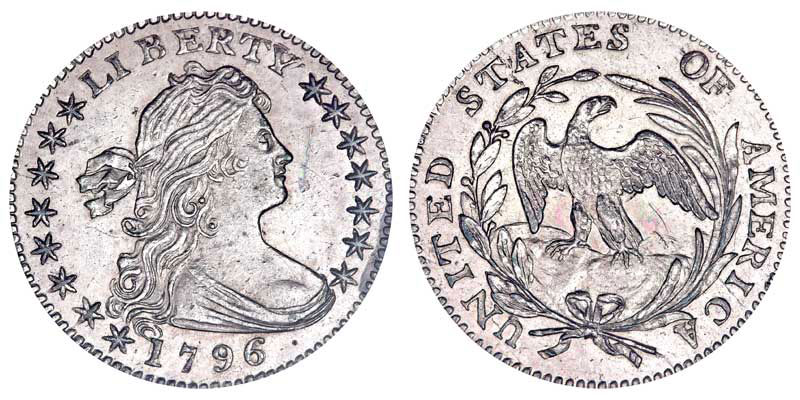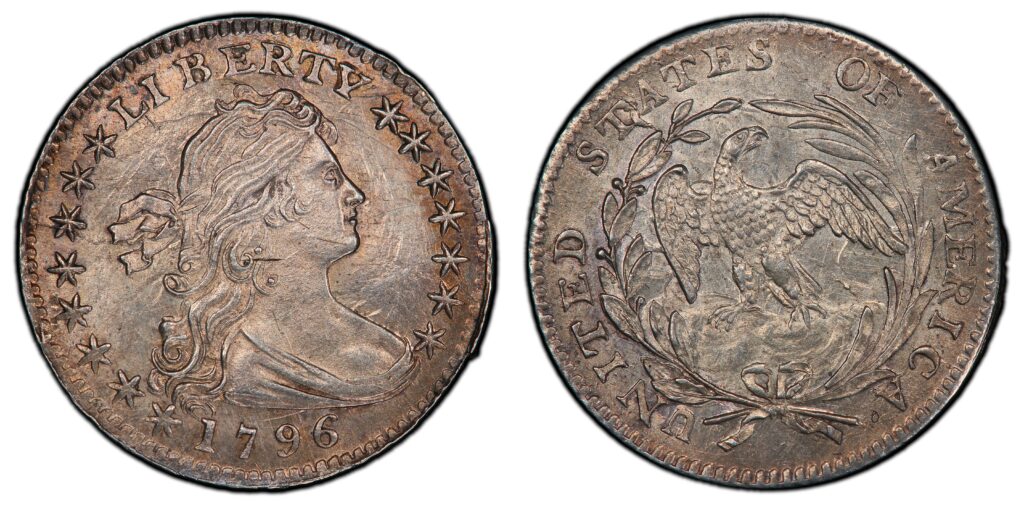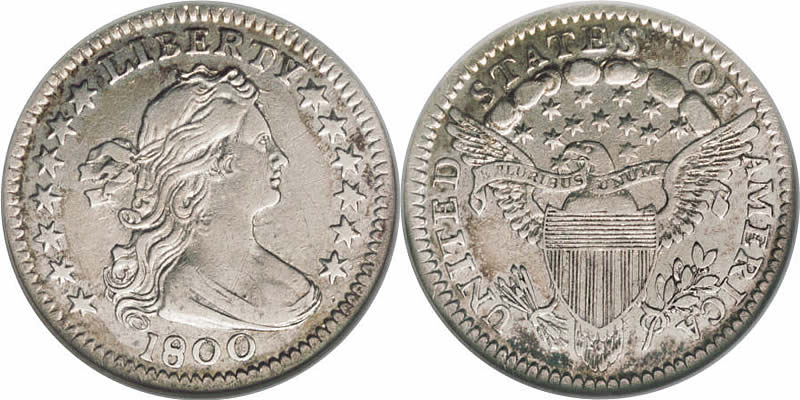
Draped Half Bust Dimes and Their Designs
The reaction to the Flowing Hair Half Dime was polarizing. Seemingly, no one other than Robert Scot and some U.S. Mint officials liked the design. Because of the adverse reaction, this design was discontinued after two brief years. What most people objected to was Miss Liberty’s flowing hair. Some found it scary, while others thought it was undignified.
One of the new U.S. Mint Director Henry De Saussure’s first objectives was to redesign the flowing hair coinage. De Saussure turned to artist Gilbert Stuart, wanting something radically different from what Robert Scot had previously designed.
Stuart’s numerous portraits of General Washington were well-known and widely appreciated. Two patrons of Stuart included Martha Washington and Mrs. William Bingham of Newport, Rhode Island. Both had ordered two full-length portraits of General Washington for their homes. De Saussure asked Stuart to submit sketches for a new vision of Miss Liberty. Stuart asked his friend and patron, Mrs. Bingham, to model for Miss Liberty.
Draped Bust Half Dime Redesign

Robert Scot and John Eckstein took Stuart’s sketches and created a different design using Mrs. Bingham as the model for Miss Liberty. The portrait of Miss Liberty faced right and had the date below, the motto “LIBERTY” above, seven stars to the right, and eight stars to the left. The reverse was essentially unchanged from the flowing hairstyle, with an American eagle holding an olive wreath with “UNITED STATES OF AMERICA” around it.
Draped Bust Half Dimes Production

Only 10,230 Half Dime coins were produced in 1796, but that included a few different varieties: a normal date, an over date of 1796/5, and a 1796 coin on which the letter “B” in “LIBERTY” was a defective “R” and looked more like a “K”- “LIKERTY.”
Then, in 1797, a mere 44,527 coins were struck, and three varieties were for the stars on the obverse. The first coins struck had 15 stars, one for each state in the Union. Later in the year, Tennessee became a state, so a 16th star was added. Finally, a 13-star variety was created because the U.S. Mint realized it could not strike an attractive and aesthetically balanced coin if it were to keep adding stars to the design. It permanently became 13 stars from that point forward.

No Draped Bust Half Dimes were struck between 1798 and 1799, but production resumed in 1800. However, the reverse American eagle design underwent a significant renovation, creating two major types of Draped Bust Half Dimes—the small eagle (1796-1797) and the heraldic eagle (1800-1805).

In 1800, 16,000 of the dimes with another misshapen letter, this time the “R” looking like a “K,” spelling “LIBEKTY” were struck. Production dropped to 27,760 coins in 1801. 1802 was a scarce year for the Draped Bust Half Dime as only 3,060 coins were minted due to a silver shortage and production problems. 1803 saw two varieties – a large eight and a small 8 in the 37,850 coins minted. No coins were struck dated 1804. In 1805, the final year of this design, 15,600 coins were minted. There were to be no more Half Dimes until 1829.




